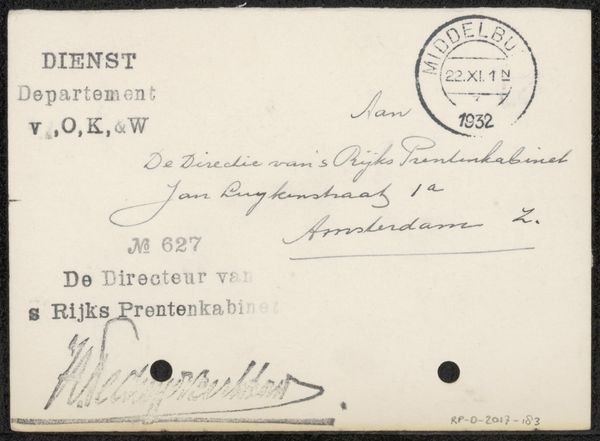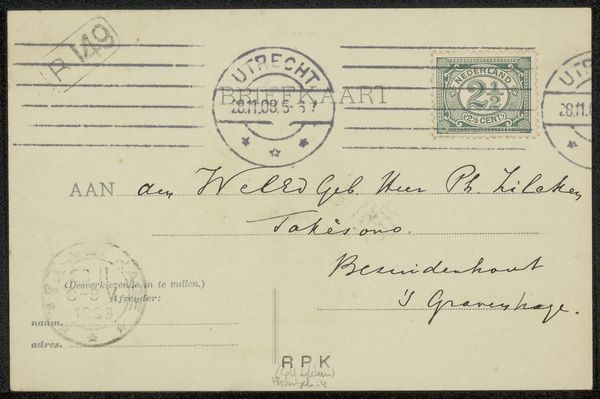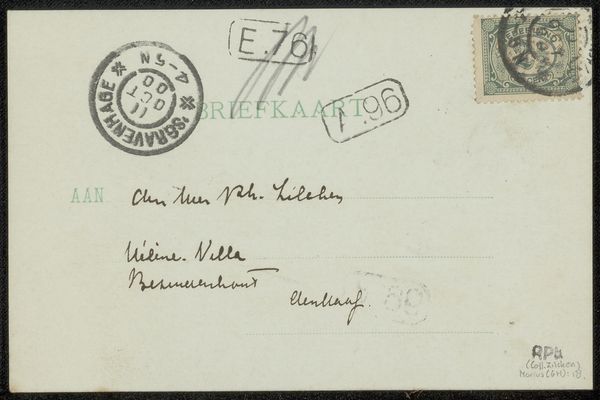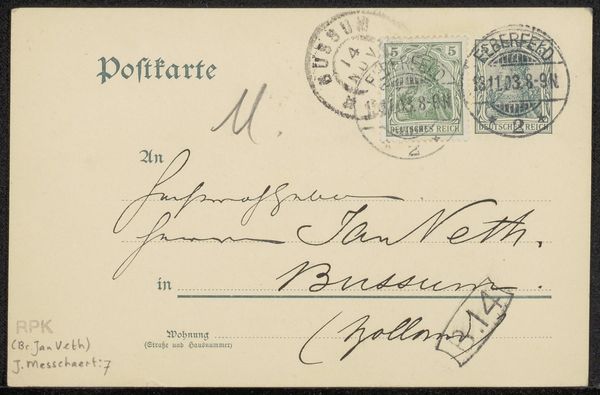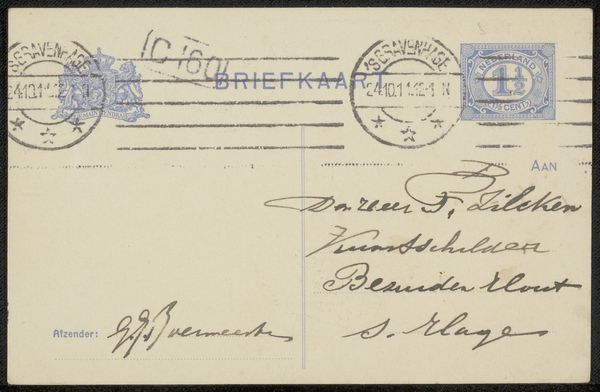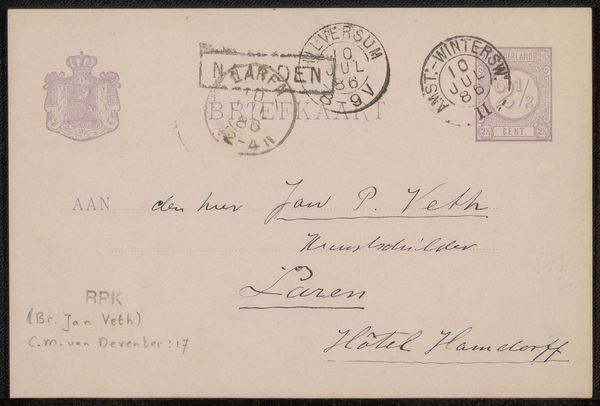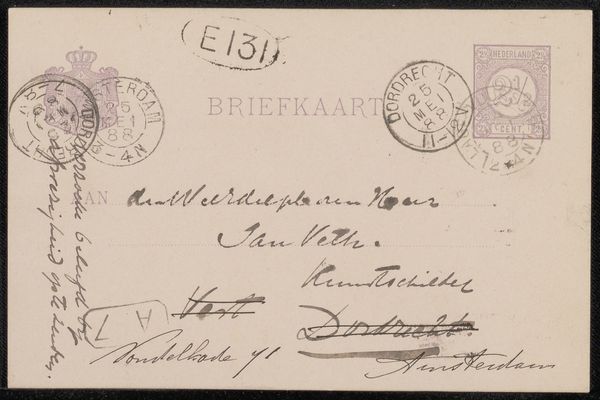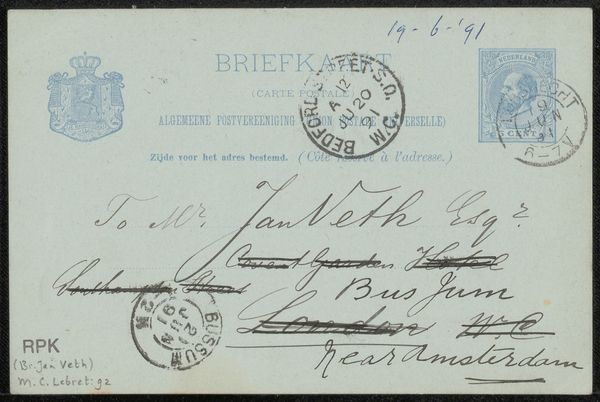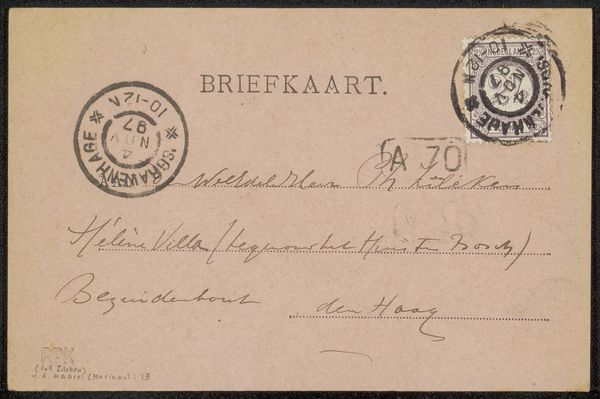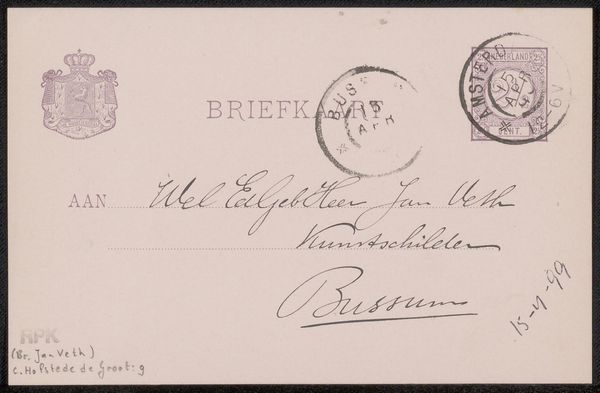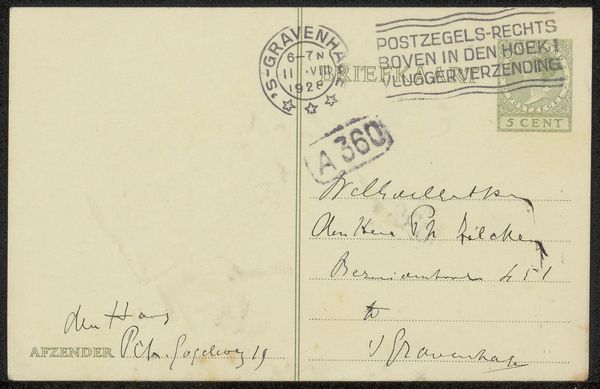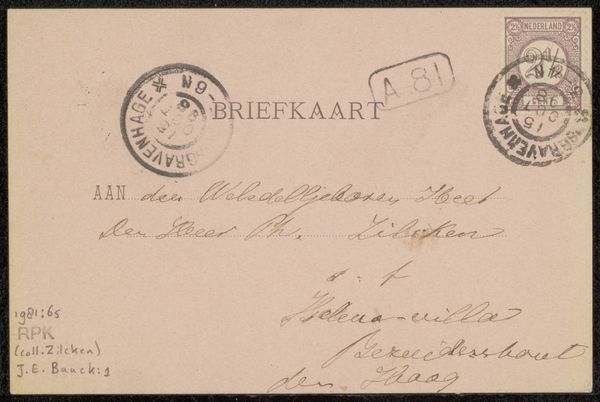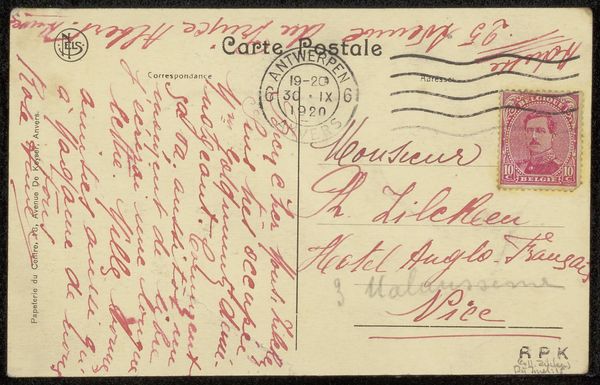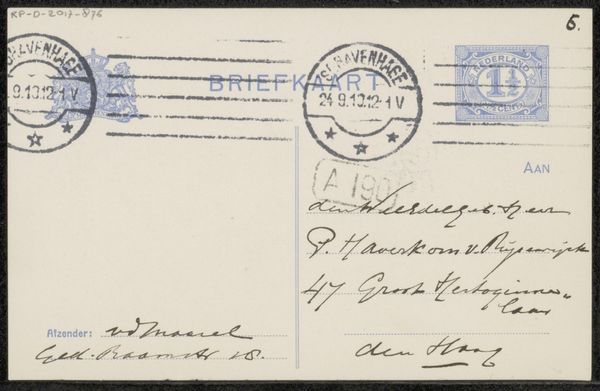
drawing, paper, ink
#
script typeface
#
drawing
#
hand written
#
script typography
#
hand-lettering
#
hand drawn type
#
hand lettering
#
paper
#
personal sketchbook
#
ink
#
hand-written
#
hand-drawn typeface
#
handwritten font
Copyright: Rijks Museum: Open Domain
Curator: Here we have “Brief aan jonkheer Hendrik Teding van Berkhout (1879-1969),” likely from 1932, created by Elias Voet jr. It’s a drawing in ink on paper. The piece presents itself as a fragment of official correspondence. Editor: Immediately, I feel the echoes of bureaucracy, yet with a hand-touched vulnerability. Look at the different typefaces blending the typed and the handwritten, this tension creates something more. It feels haunted by another time. Curator: This reflects Voet’s connection to institutions and their representation. Official communication carries immense weight, particularly in the 1930s with its own political complexities and shifting sands of power. It speaks to an attempt to harness an ordered image within what might be unspoken commentary on how language both orders, and disguises, our personal, innermost workings. Editor: Disguises is key. The handwritten parts dance with a life that the typed sections can only point to, revealing this desire to add his personal mark—a vital artistic assertion. What is the artist's relation to that which must be so very carefully, and un-expressively, written in order to mean something in the social world? Curator: I see your point. The letter could reflect shifting perceptions of officialdom amid a world transitioning towards the second world war, where bureaucratic authority was simultaneously upheld and deeply questioned, leaving artists such as Voet with the urge to ask what mark, indeed, can they themselves assert? Editor: Precisely. It is as if the soul is desperately reaching out from behind the bars of rigid type! This tension… it holds a universe of meaning between intent and perception. Curator: Looking closer at the official aspects could provide unique perspectives into the social currents moving at this historical moment. It truly encapsulates the public role of art. Editor: The imperfections within such imposed control spark our imagination and invites us to consider the subtle battle between self-expression and societal expectations. A tiny act of rebelliousness within conformity… It whispers to us still. Curator: It seems the official language creates, paradoxically, an intensely personal testament through the artist's additions, allowing him to mark both history, and the passing of time, with himself, even while disappearing beneath such cold and impersonal forms. Editor: Beautifully stated. I'll remember that perspective next time I encounter a dry, bureaucratic document! Art makes one see fresh angles and hear what these silent spaces wish to declare.
Comments
No comments
Be the first to comment and join the conversation on the ultimate creative platform.
